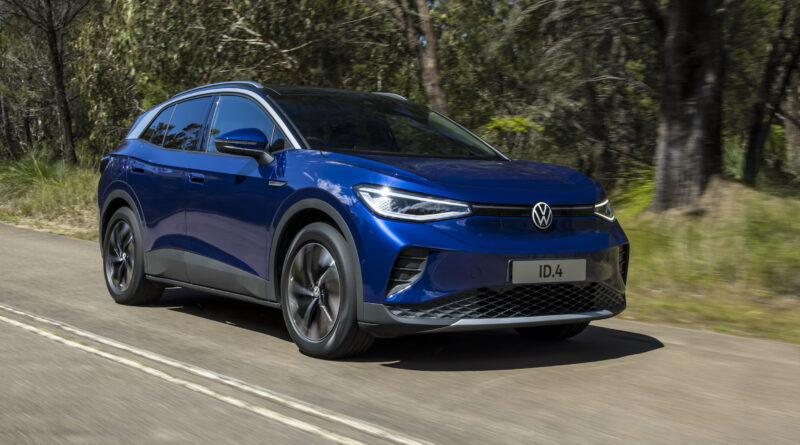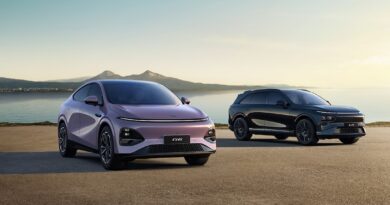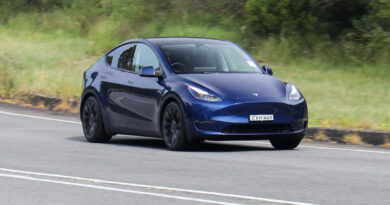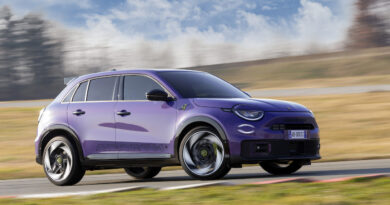Volkswagen ID.4 quick spin: first Australian drive of electric SUV
The Volkswagen ID.4 will be on sale in Australia by the end of 2023 – and we’ve driven it in Australia.
Volkswagen Australia has two ID.4s in Australia for evaluation.
While we weren’t allowed to use them on public roads or for an extended period, we had a brief stint behind the wheel of each to experience what is an important vehicle for the brand.
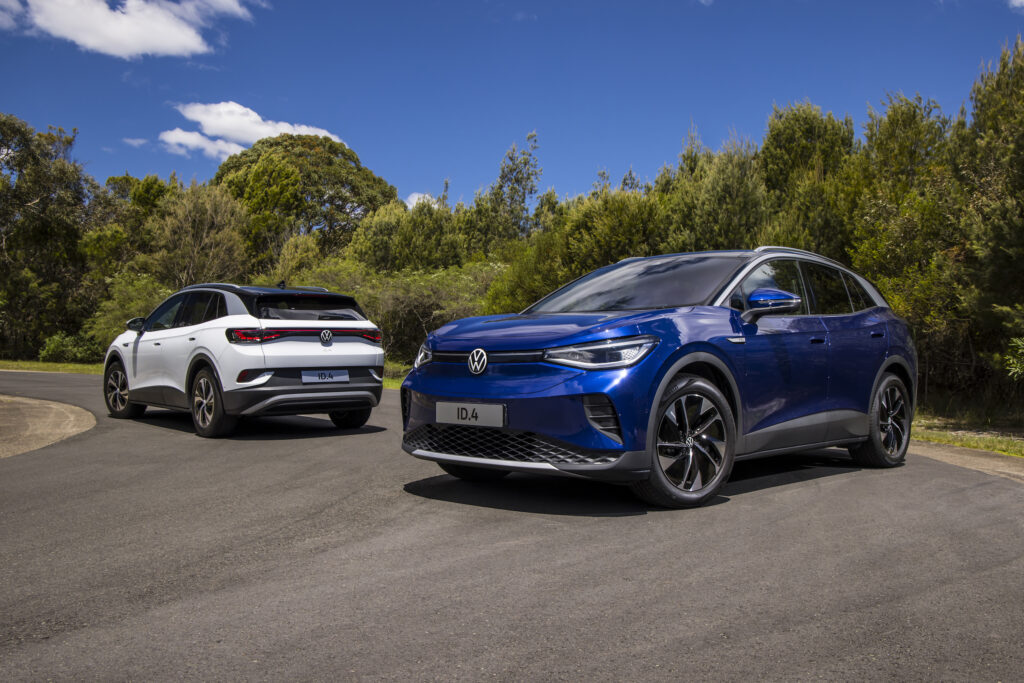
The ID.4 and its sleeker ID.5 sibling are planned to hit Volkswagen dealerships in the second half of 2023.
What is the Volkswagen ID.4?
First, some background.
The ID.4 is Volkswagen’s first electric SUV.
INTERNATIONAL DRIVE: Volkswagen ID.4 Pro Performance review
READ MORE: Early mark for VW ID.4 and ID.5 as brand confirms three-model EV play in Australia
READ MORE: ID.4 electric SUV most important VW ‘since the Beetle’
READ MORE: X the new I: Sporty GTX version of Volkswagen ID.4 revealed
It’s built on an architecture Volkswagen refers to as MEB. It’s a modular design that can fit under a broad range of vehicles, from the ID.4 and ID.3 hatchback to the electric interpretation of the Kombi, known as the ID.Buzz.
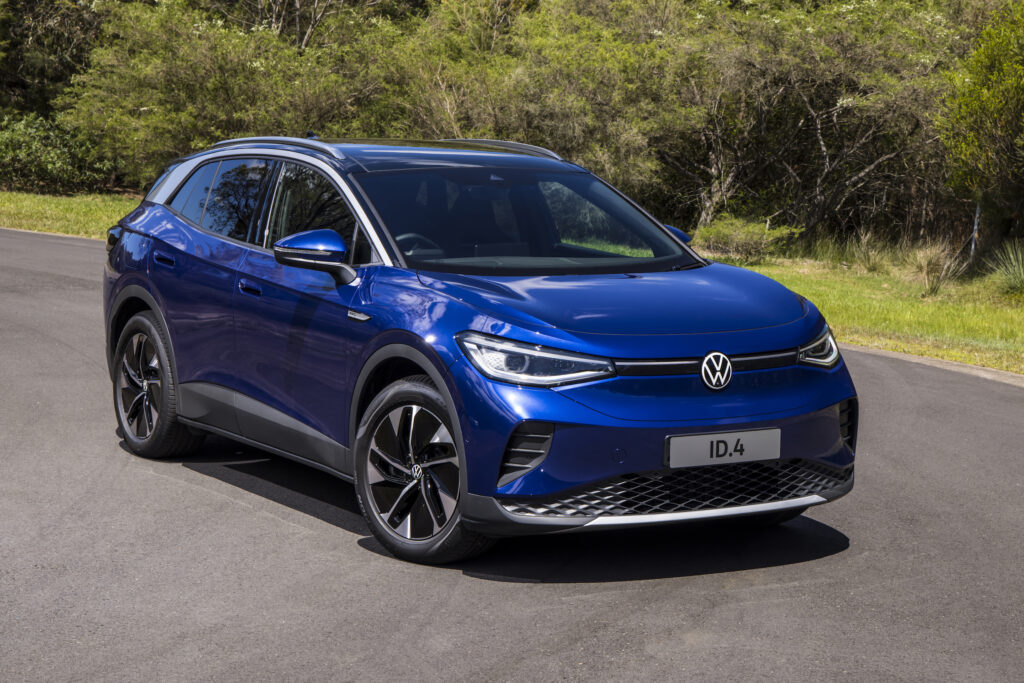
MEB is also used under a range of vehicles from other brands in the Volkswagen stables, including the Skoda Enyaq iV, Audi Q4 e-Tron and Cupra Born.
In terms of size, the ID.4 is classified as a mid-sized SUV. While it doesn’t look large from the outside, being based on that EV-only architecture gives it decent space inside.
That’s because there’s almost a completely flat floor (in the back seats there’s only a tiny blip in the centre). Plus, at 2765mm the wheelbase is quite long, liberating more space for occupants.
Despite the ground-up EV design there is no storage under the bonnet (or a frunk), with the 543-litre boot (complete with an underfloor compartment) the only spot for luggage.
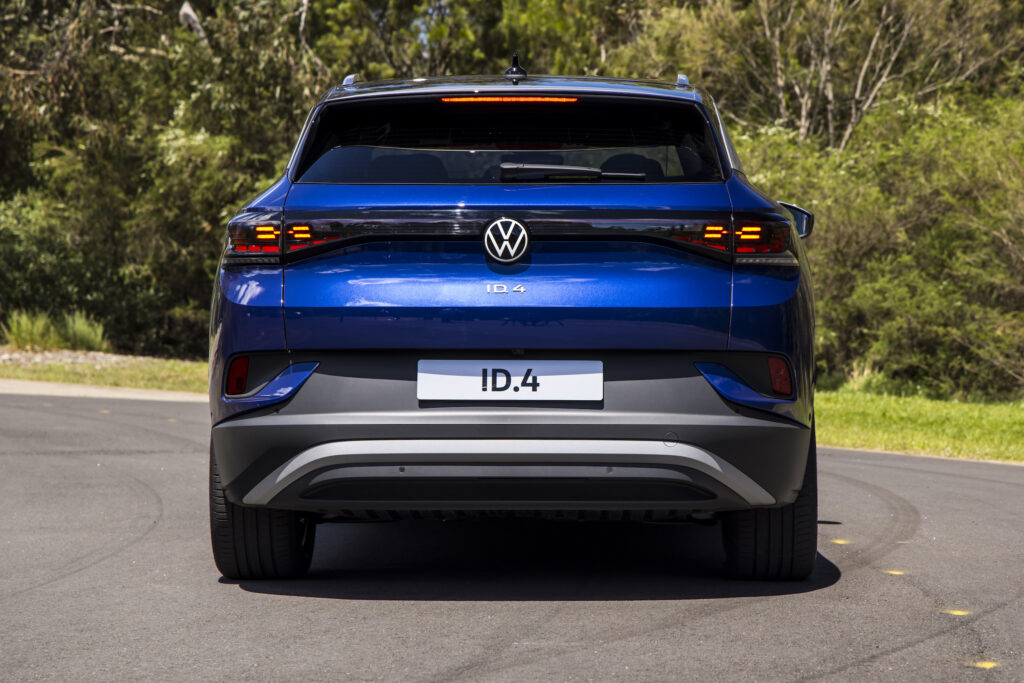
The ID.4 also has a sibling in the ID.5, which will also arrive in Australia late in 2023.
The ID.5 uses the same mechanical package and interior layout, although it has a sleeker roofline for a sportier look. That means a fraction less headroom and boot space.
How much will the Volkswagen ID.4 cost?
Pricing and final details haven’t been announced for the ID.4 or ID.5 yet.
But Volkswagen has given some big clues.
The two models will start as a premium proposition, initially available as the ID.4 Pro Performance and an equivalently highly-specified version of the ID.5.
That means a long list of standard equipment, including a panoramic sunroof, electrically adjustable seats and 19-inch wheels.
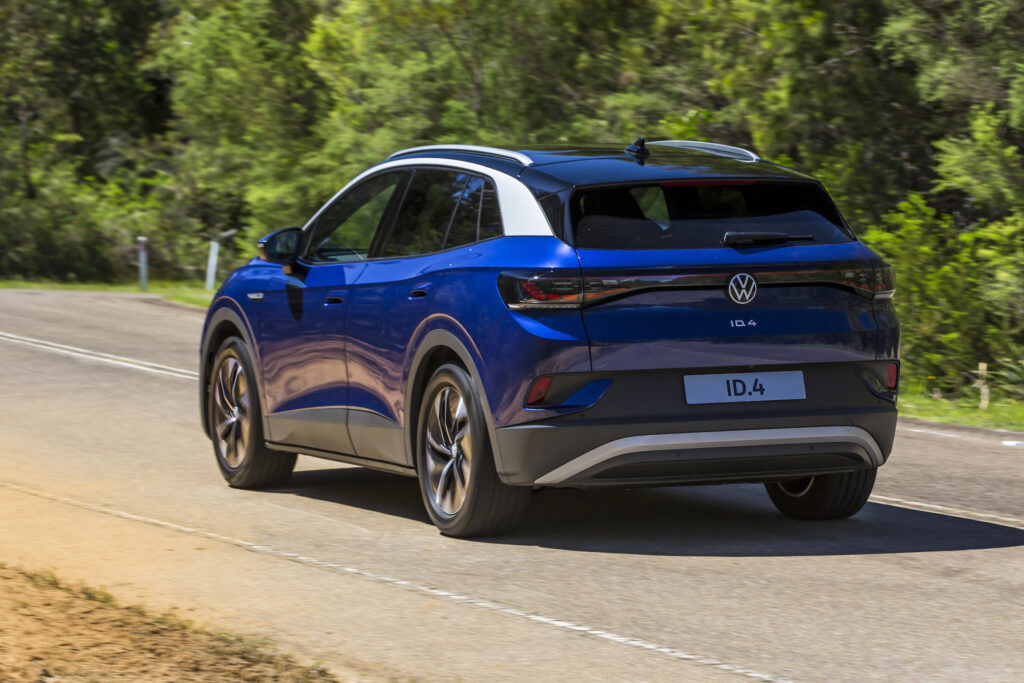
Volkswagen Australia brand director for passenger vehicles Michal Szaniecki says the ID.4 will have “target pricing similar to our most in-demand SUV, the Tiguan 162TSI R-Line”.
That vehicle sells from $57,690 before on-road costs, so expect something around there.
At that price, the ID.4 should easily take advantage of the various rebates and incentives available in most parts of the country (sorry Queenslanders, but you’ll likely miss out).
But there’s more to the ID.4
Arriving at the same time will be the coupe-style ID.5 “with pricing similar to a Tiguan R, enabling customers to alternatively pick an even more design-focused BEV”, according to Szaniecki. So expect to pay about $10K more than an ID.4 for the ID.5.
Cheaper ID.4s will come here eventually
The ID.4 will start as a fully-loaded vehicle but Volkswagen eventually plans to offer more affordable variants.
Volkswagen says those more affordable versions – the Pure is an obvious choice – will arrive after a global model refresh expected around 2024.
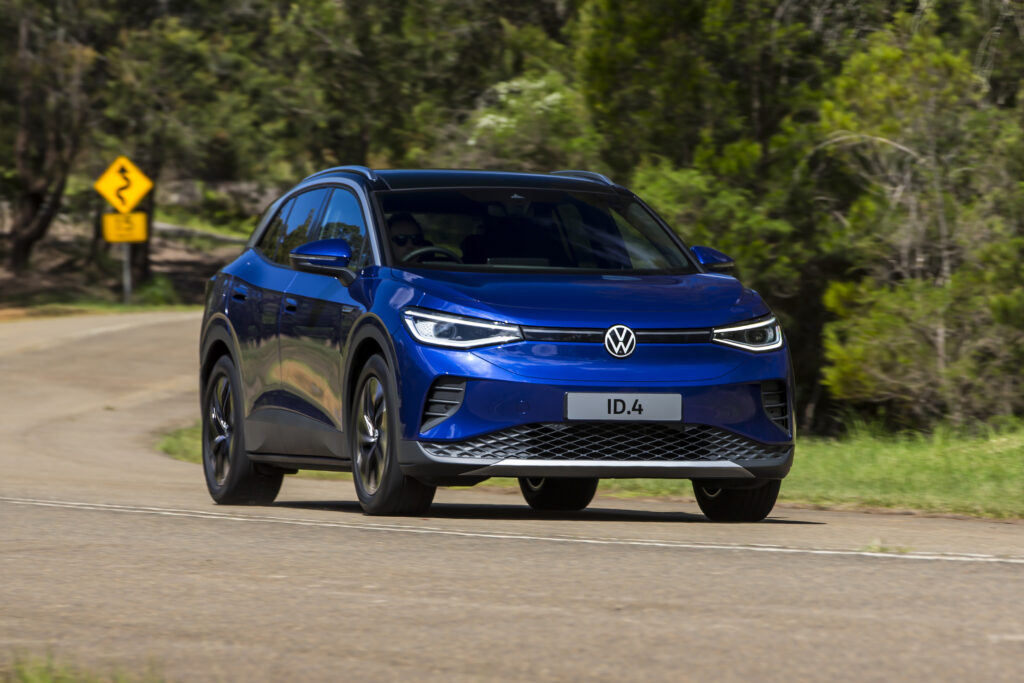
Clearly some of the fancy equipment in the Pro – head-up display, panoramic roof, electrically-adjusted seats and sizeable 12-inch touchscreen – would likely be left off those lesser models, in turn lowering the price.
While private buyers will likely make up a fair chunk of the early ID.4 demand, Volkswagen highlights fleets and governments as being key to those more affordable variants.
Meet the ID.4 family
The two ID.4 models Volkswagen has imported to Australia for evaluation are the Pure Performance and the Pro Performance.
Both get a single electric motor driving the rear wheels.
The main difference between them is the battery pack.

In the Pure there’s a 55kWh battery with 52kWh of usable capacity for a WLTP driving range of 345km. In the Pro that steps up to 82kWh and 77kWh of usable capacity, for 522km of WLTP range.
Both make 310Nm of torque.
But there is a difference in power outputs due to how much the battery packs can supply; in the Pure the peak output is a modest 125kW while in the Pro that steps up to 150kW.
Interestingly, there’s only around a 10 percent difference in the power to weight ratio, mainly because the Pro with its bigger battery pack is 158kg heavier (both are nuggety, at 1966kg and 2124kg). For the Pure each kilowatt has to shift 15.7kg while in the Pro it has to move 14.2kg.
There is also a difference in charging credentials.
The Pure can accept 7.2kW of AC charge power and up to 110kW of DC power. A 0-80 percent DC fast charge can be done in a claimed 26 minutes (or 32 minutes for the full top-up). Slower AC charging takes as little as eight hours for a full charge when using a wallbox charger. From a home powerpoint the whole charge takes 24 hours.
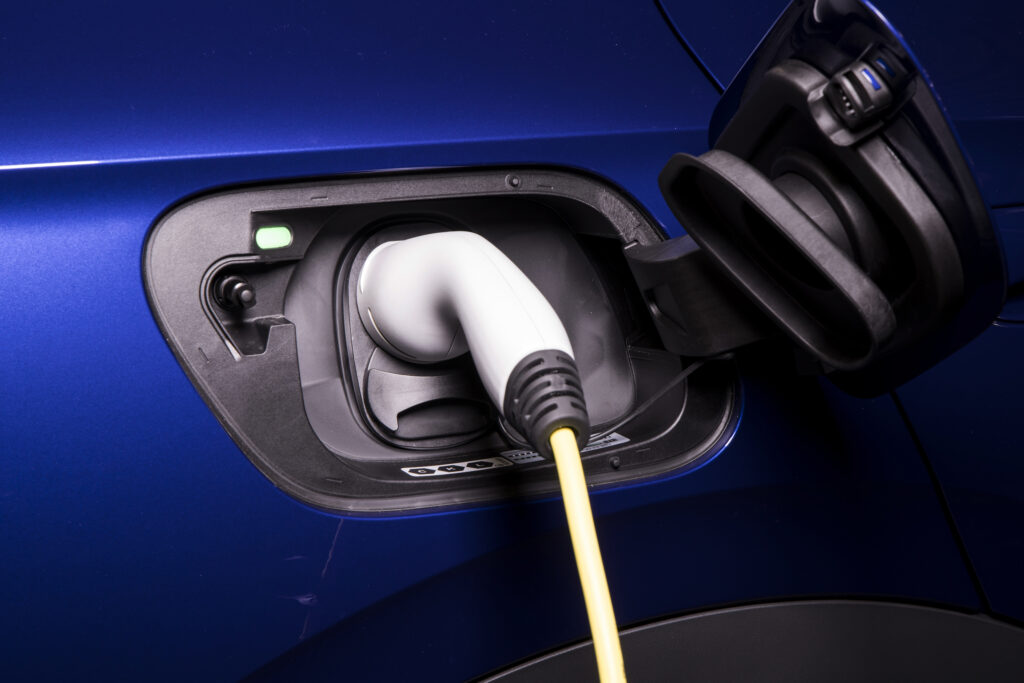
The ID.4 Pro accepts up to 11kW of AC charge and 125kW of DC charge. The DC fast charge from 0-80 percent takes 33 minutes (or 42 minutes for a full charge) and an AC wallbox charge takes as little as eight hours (or more like 10.5 if using the more common 7.4kW home wallbox that only requires a single-phase connection). A domestic powerpoint takes 35.5 hours for a full charge.
On the road in the ID.4
There are hints of Tesla but loads more Volkswagen in the ID.4.
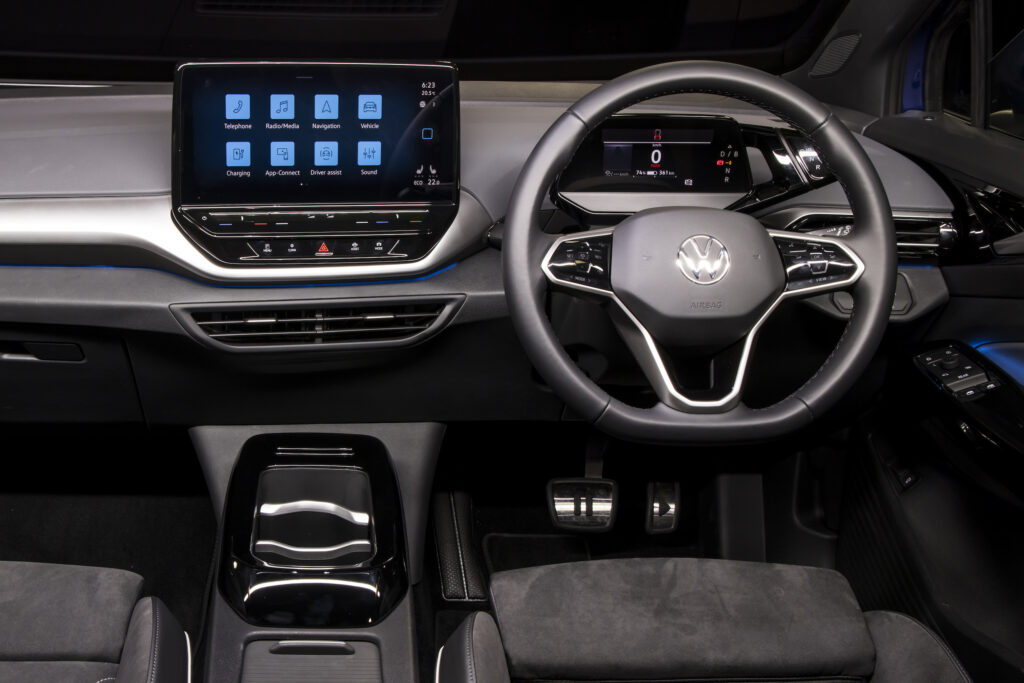
The play and pause symbols on the accelerator and brake pedal embrace some of the fun thinking that Tesla pioneered.
But the main Tesla hint is how you get things moving. Like all Volkswagens there’s a keyfob that needs to be in the car to start it up. But once the vehicle senses a bum on the seat it’s active and ready to go; no start button exists.
Then you twist the gear selector to the right of the instrument binnacle.
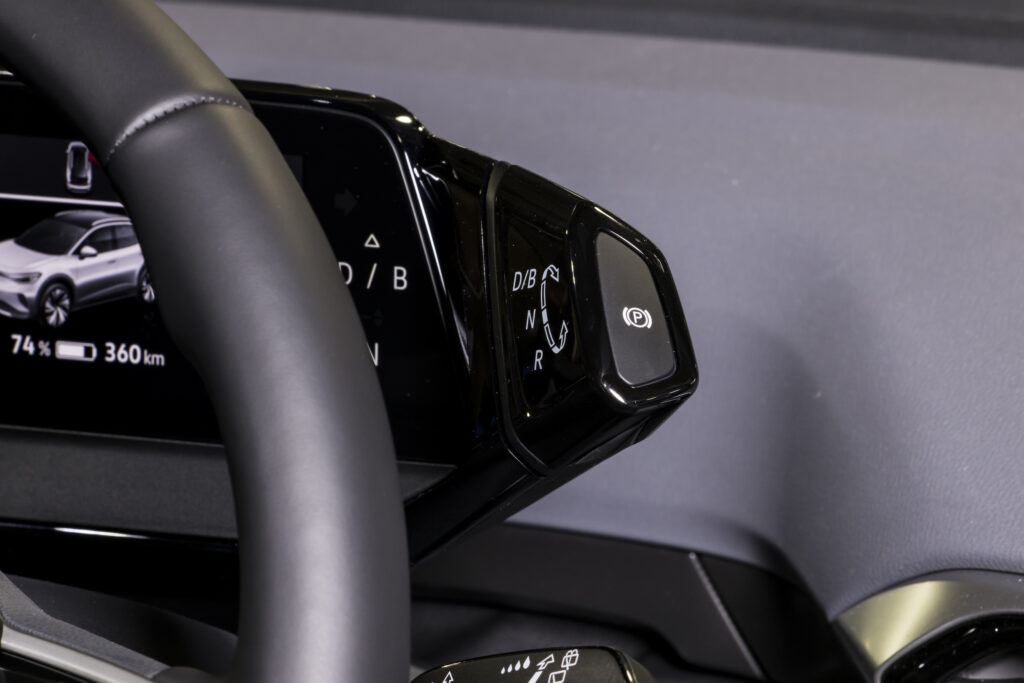
Our test took place on a 1.65km closed road that was hardly representative of what the average ID.4 is likely to encounter in everyday driving duties.
But it was enough for a taste test.
We tested both the Pure and Pro models, the main difference between the two being the battery pack.
The Pure pulls strongly to about 50km/h then feels less lively as it makes its way towards 100km/h. The journey is claimed to take 9.0 seconds, which sounds like a lot.
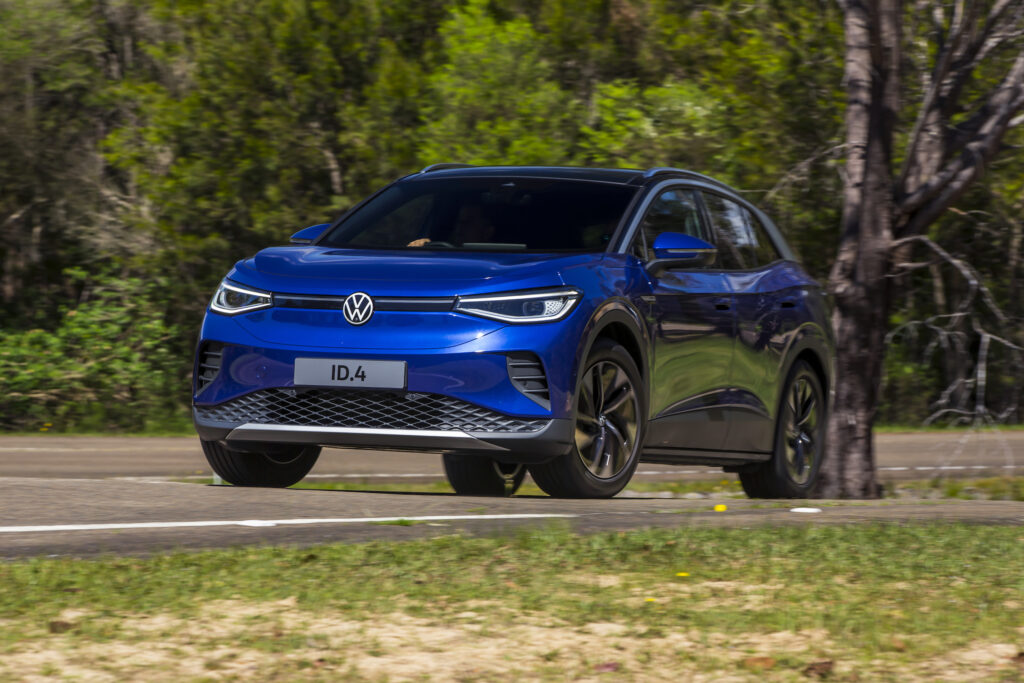
The raw numbers aren’t fair to its easy and effortless performance, which is dominated by the quick-responding torque.
The Pro is almost identical in its initial acceleration but has a fraction more enthusiasm around the 70 or 80km/h mark. Its claimed 0-100km/h dash takes 8.5 seconds but, again, it’ felt perkier during our brief stint.
Accelerating out of tight corners occasionally has the traction control intervening, but it’s smooth in its operation, pulling back some torque until it determines traction is sufficient.
That rear-drive focus gives the ID.4 a sporty flavour and combines with decent cornering grip to create a car that’s fun to zip around in.
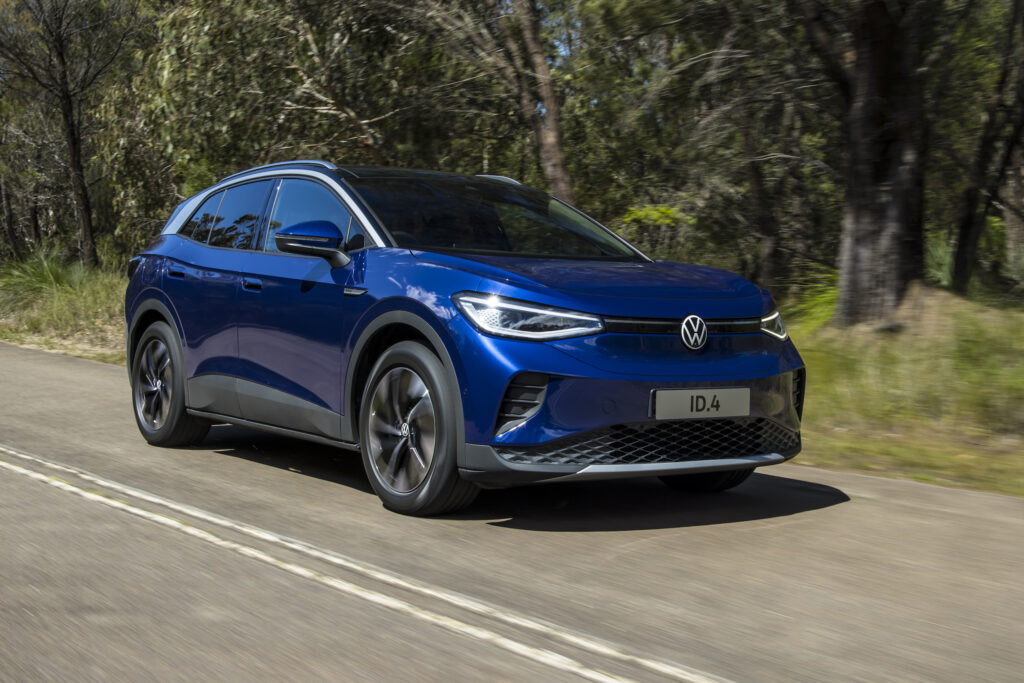
In regular driving mode there’s no regenerative braking, the car just coasting when you lift off the accelerator.
Switch it into B mode – for brake – and there’s a moderate level of auto braking when you take your foot off the throttle.
Cabin tech, space and trinkets
The ID.4 is surprisingly spacious in the cabin. Those up front get a clean, open centre console with a sliding cover. There’s plenty of places for odds and ends and the finishes present well, although have some cheap elements.

There’s not much in the way of switches and dials, Volkswagen instead leaving much of the functionality to the touchscreen.
It comes with touch buttons and sliders for the temperature and volume control, which – like many modern Volkswagens – is an inferior way of doing it compared with good old buttons and dials.
There are also some quirks, such as the window switches that have only two buttons on the driver’s door; you need to toggle between the front and rear windows before pressing or pulling those switches.
EVs to join the regular Volkswagen range
Volkswagen will treat its ID.4, ID.5 and ID.3 – which will also come to Australia late in 2023 or 2024 – as regular additions to the range.
The big challenge will be getting enough of them.
Many brands have struggled to convince their respective head offices to send cars Down Under when they can potentially sell the same cars for more in other parts of the world, especially Europe.
That partly comes down to CO2 emissions regulations, which are in place in most developed countries but are currently non-existent in Australia (they are coming).
Still, even without them, Volkswagen is planning big things for EVs.
It says it will get as many as 4000 ID.4s in 2024 (the first full year it will be on sale) with plans for many more after that.
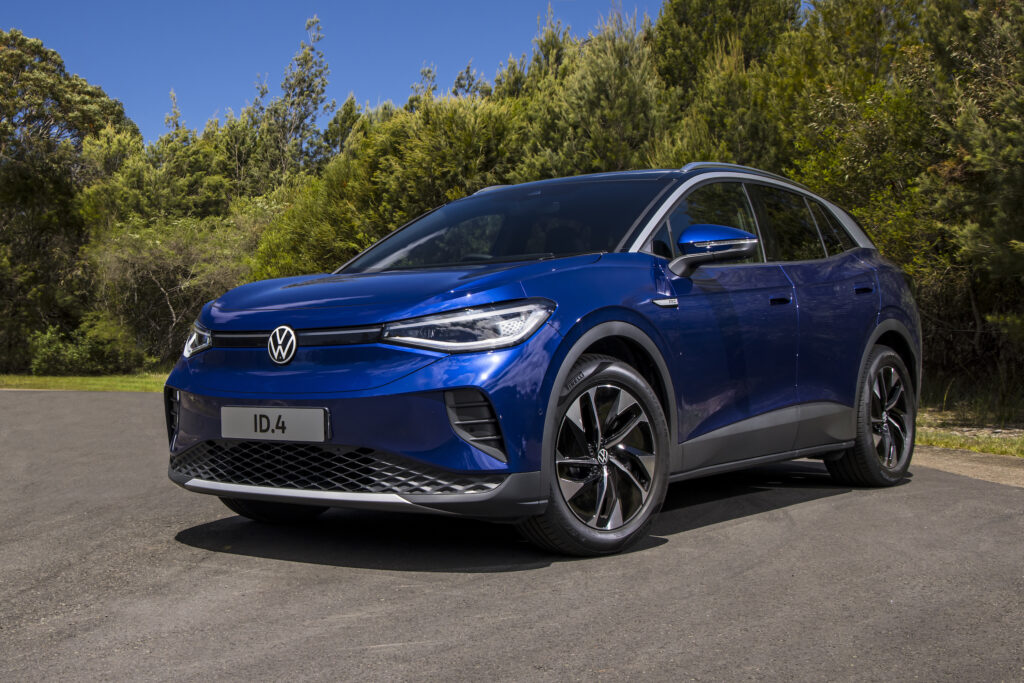
Beyond that, Volkswagen is boldly suggesting it will overtake Tesla on EV sales.
“Our goal is that we will outsell them (Tesla),” says Volkswagen Australia head of product for passenger vehicles, Michelle Rowney. “We are a volume brand and that’s what we want to do.
“We don’t look at [ID.4] as it sits in that little EV segment; it sits in the medium SUV segment, it suits the needs of a family car, it suits the needs of that segment.”
Volkswagen ID.4 Pro Performance price and specifications
Price: About $60,000 plus on-road costs
Basics: EV, 5 seats, 5 doors, SUV, FWD
Range: 522km (WLTP)
Battery capacity: 82kWh (77kWh usable)
Battery warranty: TBA
Energy consumption: 17.2kWh/100km
Motors: 1 rear, 150kW/310Nm
AC charging: 11kW (Type 2 plug)
DC charging: 125kW (CCS combo plug)
0-100km/h: 8.5 seconds

